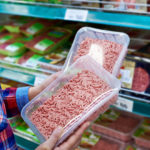Worried about Mad Cow Disease?
What is your take on mad cow disease?
Andrew Weil, M.D. | April 5, 2004

As almost everyone knows by now, mad cow disease (bovine spongiform encephalopathy or BSE) has appeared in the United States, raising the remote possibility that eating beef could lead to the human form of the disease, which resembles Creutzfeldt-Jakob disease. This is a complicated issue that raises important questions about the safety of our food supply and the way cattle are fed and slaughtered.
From a food-safety point of view, the odds of developing the human form of mad cow disease are pretty low. Worldwide, only 153 human cases of the disease related to eating beef have been reported, none in the United States. Odds are that if you continue eating beef you’ll be perfectly safe from this disease. But you should be aware that there is no test for mad cow disease that can be done on live cattle – the available tests are done after the cows have been killed. Of the 35 million cattle slaughtered in this country every year, only 20,000 are tested for mad cow disease, so there’s no guarantee that the disease will be caught before it shows up in your hamburger meat.
BSE is caused by a protein called a "prion" that can’t be destroyed by cooking, freezing, irradiation or the usual methods of chemical disinfection. The highest concentrations of infectious prions are found in the spinal column and brain of sick animals. Some experts think that it might be best to avoid meat that comes in contact with these tissues. This would include beef cheeks, tongue, other head meat and bone marrow. Meat cut from spinal bone such as porterhouse or T-bone steaks are more likely to come in contact with spinal cord tissue than cuts such as brisket or shanks. As for hamburger, you’re better off grinding it yourself from a chuck roast. Reportedly, prepackaged ground meat can come from as many as 400 different animals and often contains meat scraps. There’s also evidence that meat in hot dogs and sausages as well as hamburger meat comes from a process called "advanced meat recovery" in which meat is extruded from carcasses under pressure. A U.S. Agriculture Department study in 2002 found that this type of meat from three quarters of plants tested contained central nervous system tissue.
I’m very concerned about how cattle are fed these days on the big industrial farms where they’re raised. Instead of grazing and eating grass as the animals do naturally, they’re fed diets that include products made from the blood of their own species as well as "protein" in the form of "chicken litter" – the dirt (including feathers and feces) swept out of chicken houses. A recent article in the New York Times noted that some of this feed may contain bovine meat and bone meal, which FDA rules prohibit in cattle feed. In short, we’ve turned vegetarian animals into carnivores and cannibals, a gross violation of the order of nature. The root problem here is the greed that motivates big factory-farming and the disappearance of family farms. I would like to see more public outrage over these changes.
If you want to continue eating beef, I recommend buying only certified-organic meat. The cattle grown on these farms have not been raised on feed that may carry spinal column and brain tissue, and are much less likely to be spreading mad cow disease.
Andrew Weil, M.D.









